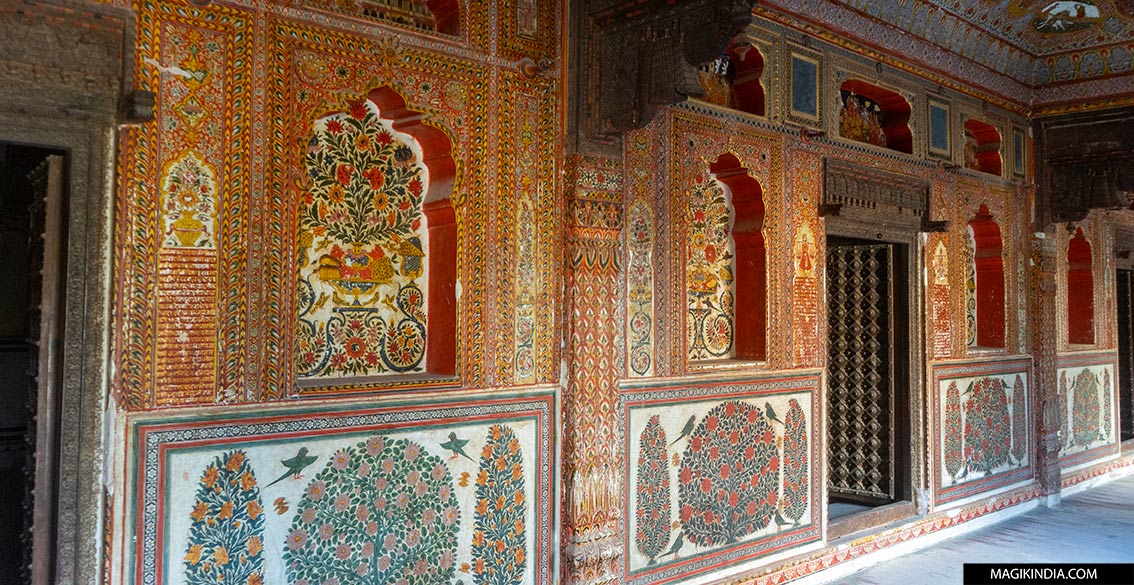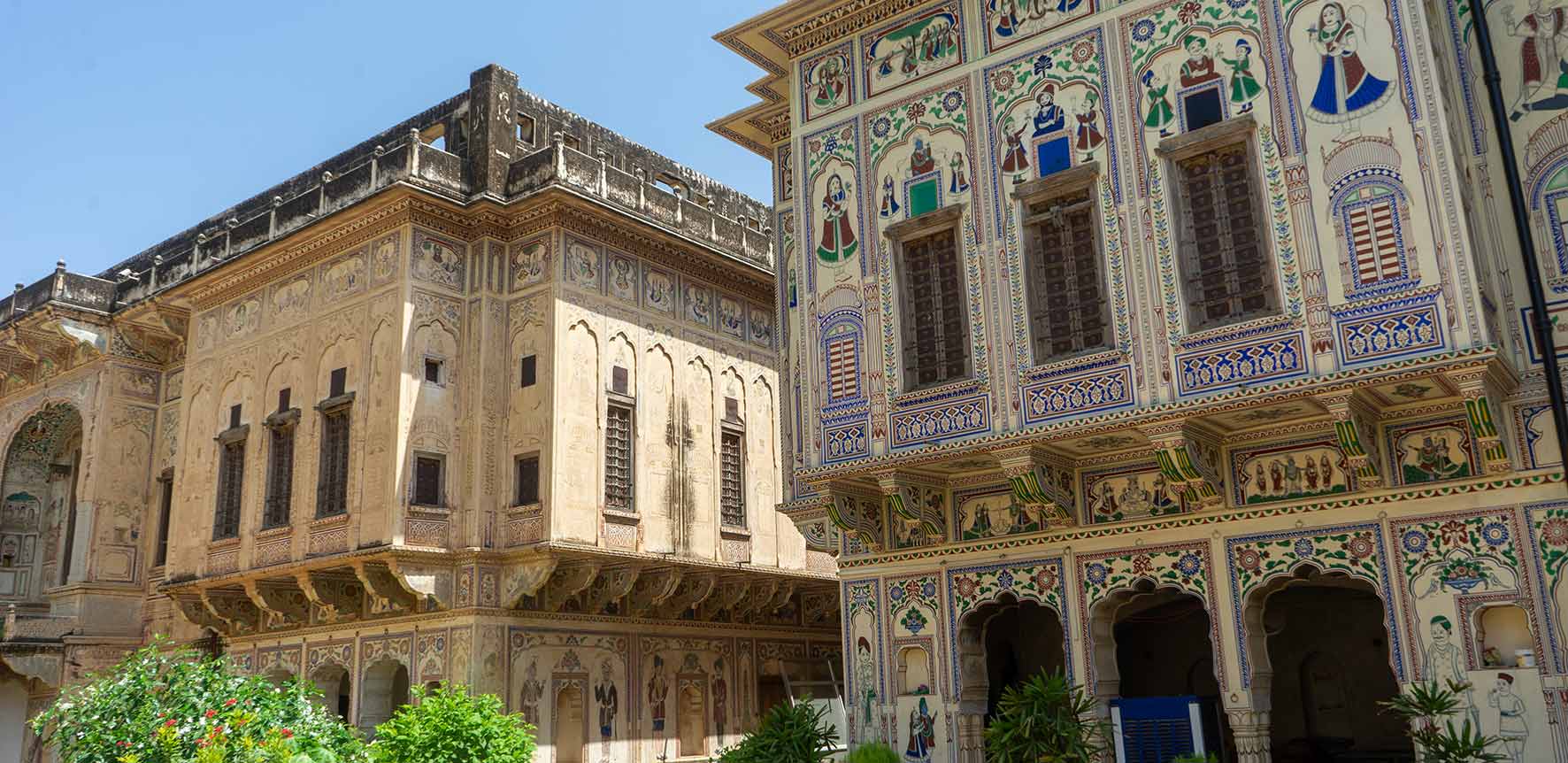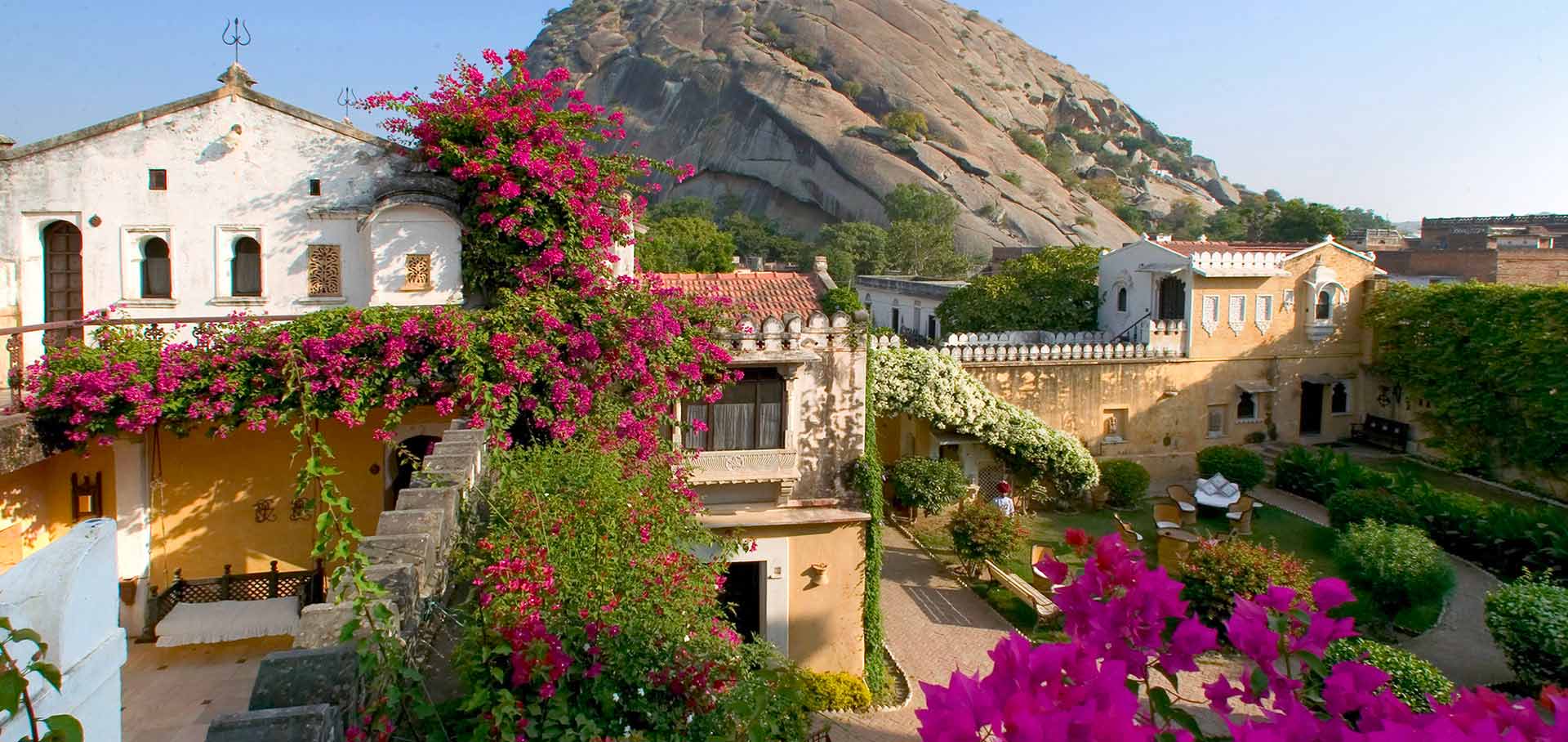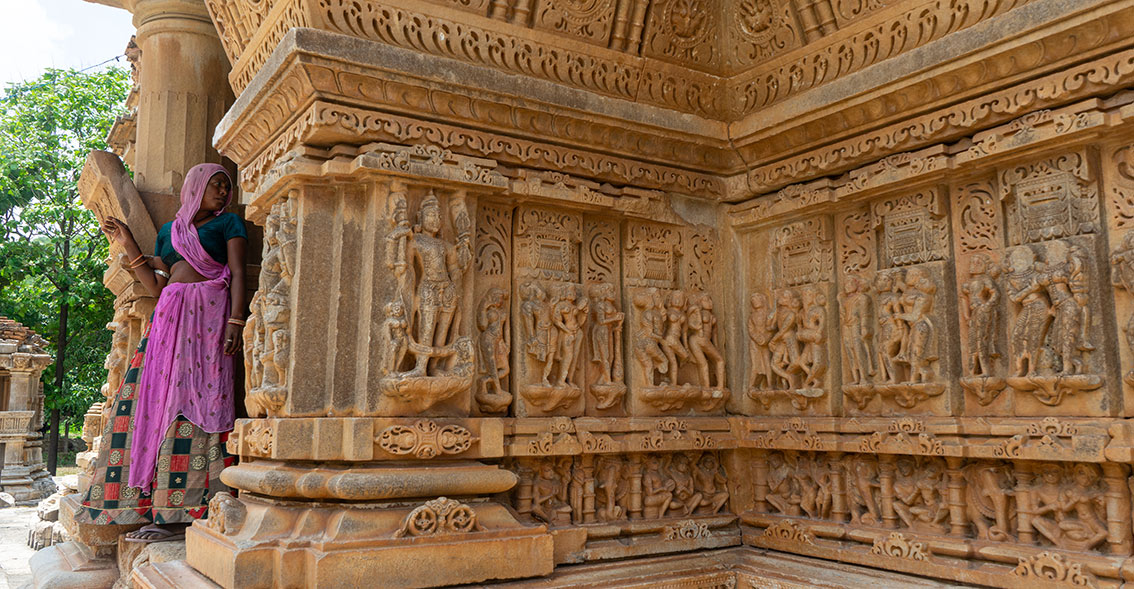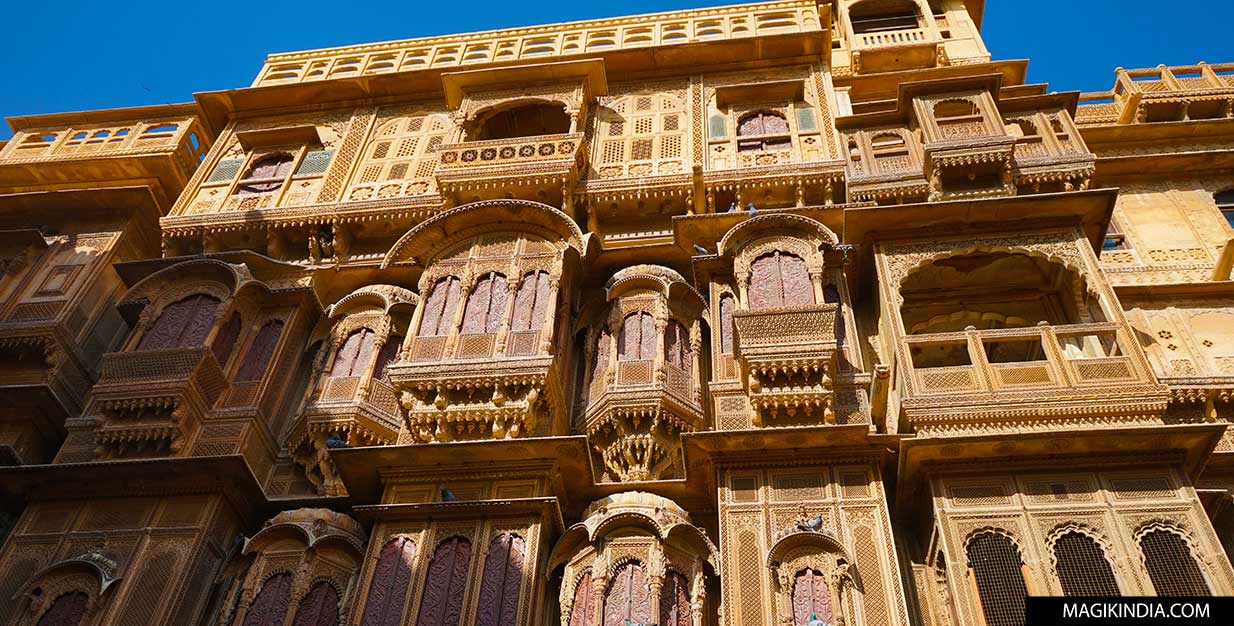
Patwon Ki Haveli, a golden poem engraved in stone
In the vibrant heart of Jaisalmer, Patwon Ki Haveli stands as if born from an ancient dream of bygone splendor. This golden sandstone masterpiece, like a chiseled poem, lets each sculpture sing the city’s sumptuous history. It is a living treasure of Rajasthan, where the souls of builders and merchants continue to soar.
History of the Patwon haveli
The Patwon Ki Haveli is not just a single building, but a spectacular complex of five individual havelis, built side by side and interconnected, giving the impression of a single massive structure from the outside.
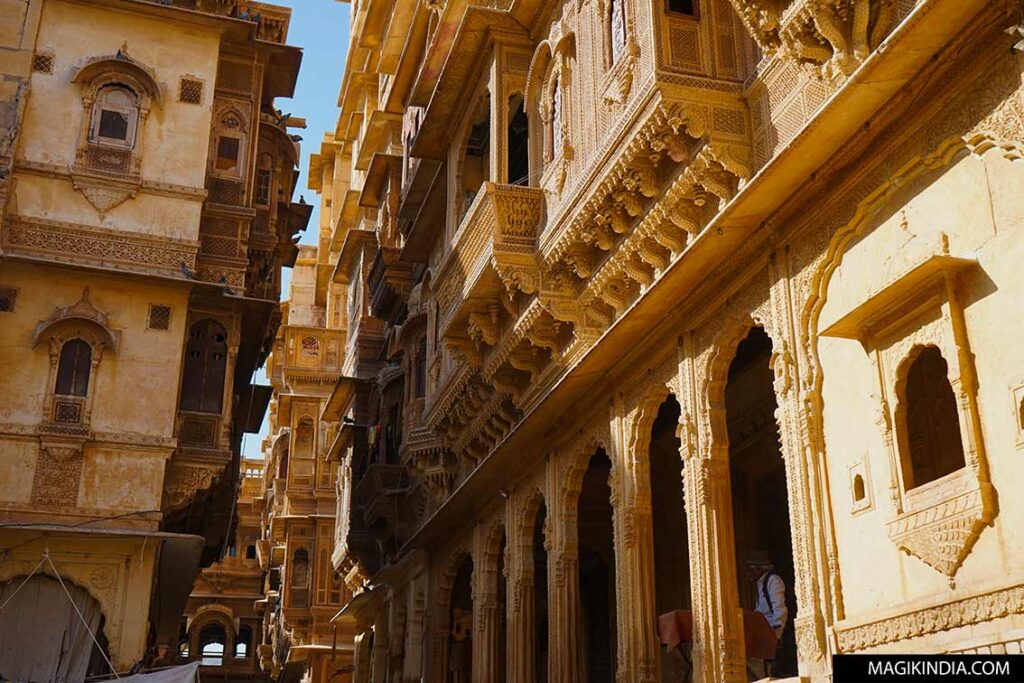
The history of this architectural complex begins in 1805 CE, when Guman Chand Patwa, a wealthy Jain merchant, initiated the construction of the first haveli. His wealth came mainly from the trade of gold, silver, precious stones, and brocade, hence the nickname “House of Brocade Merchants.”
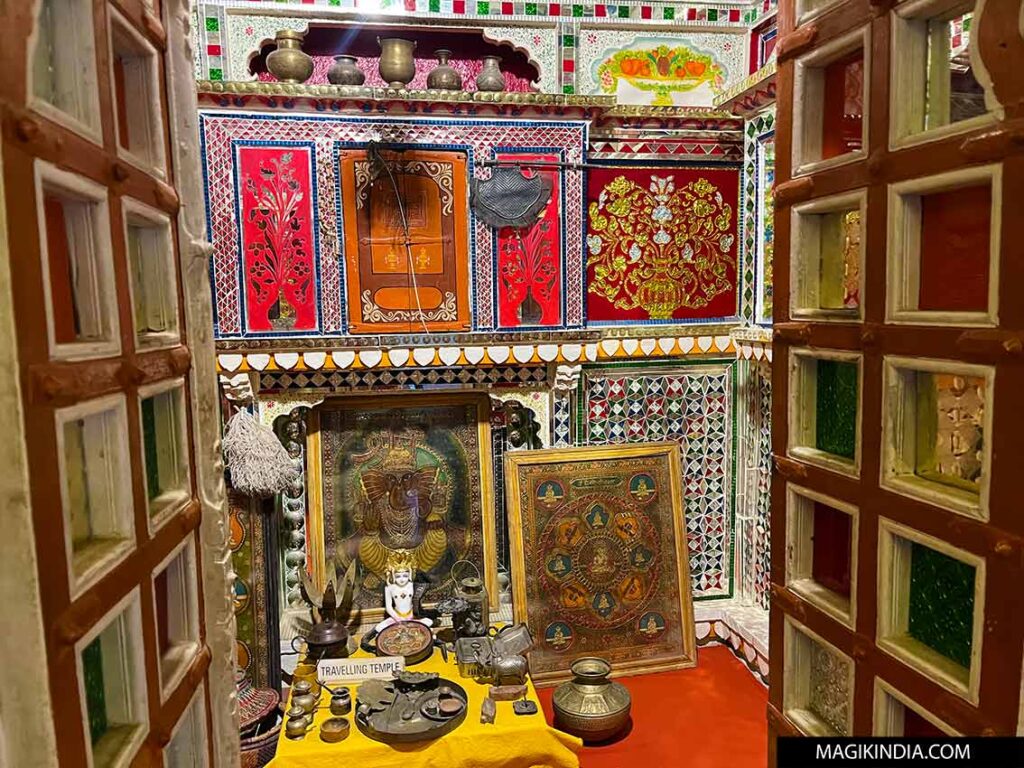
The construction of all five havelis took place over a considerable period (55 years) with Guman Chand Patwa’s sons continuing the project, each building their own adjacent residence. The first haveli, however, remains the largest and most sumptuous of all.
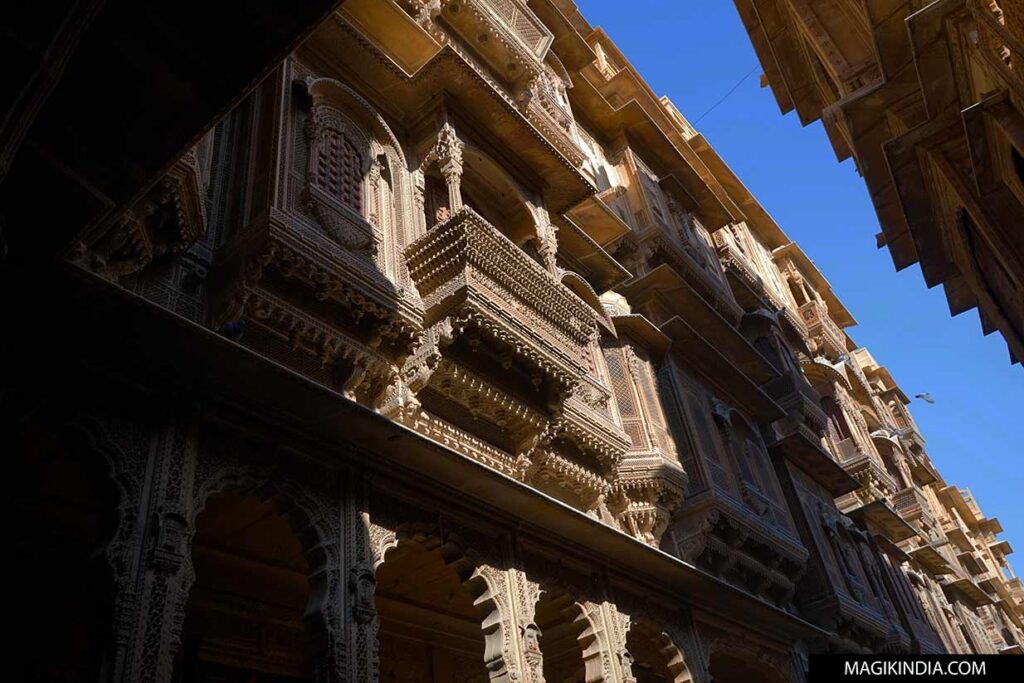
After a period of decline when the Patwa’s wealth waned and the havelis fell into disuse, in 1974, some were taken over by the Archaeological Survey of India (ASI) and restored. Today, these palatial homes are a major tourist attraction, preserving Rajasthan’s architectural and cultural heritage.
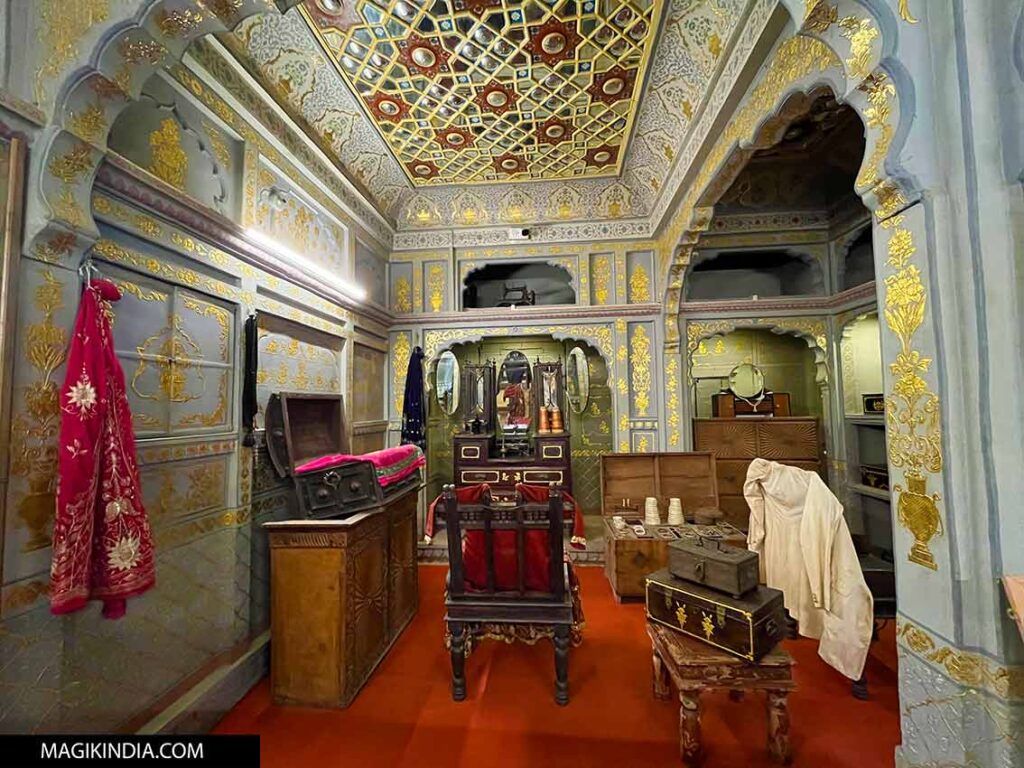
The main haveli (the first) has been converted into a museum, offering visitors an immersion into the lifestyle of merchant families of the time. It features artifacts, antique furniture, utensils, works of art, and musical instruments, among other things.

Architecture of the Haveli
The Patwon Ki Haveli’s defining feature is its exclusive use of yellow sandstone. This material gives the building a distinctive golden color that gleams in the desert sun, hence Jaisalmer’s nickname, the “Golden City.” This sandstone is not only aesthetically pleasing, but also easy to carve and provides good thermal insulation, a trait common to all Rajasthani havelis.
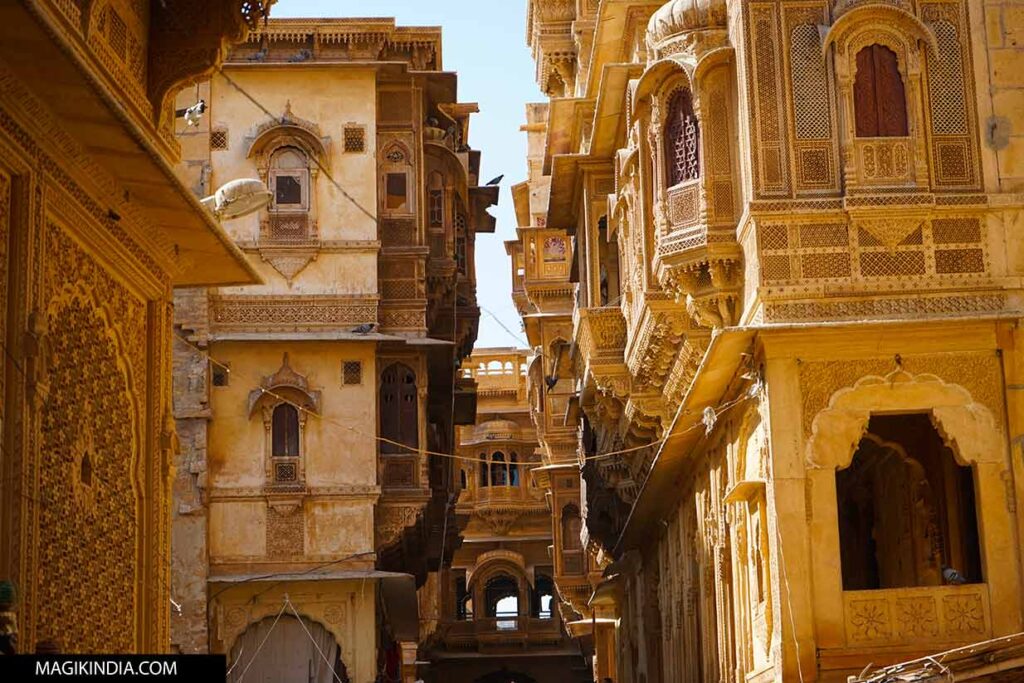
The architecture of Patwon Ki Haveli is a remarkable fusion of Rajput and Mughal styles. It features exquisite carvings typical of both architectural traditions. What makes Patwon Ki Haveli so fascinating is its incredible richness of detail and the exceptional craftsmanship employed.
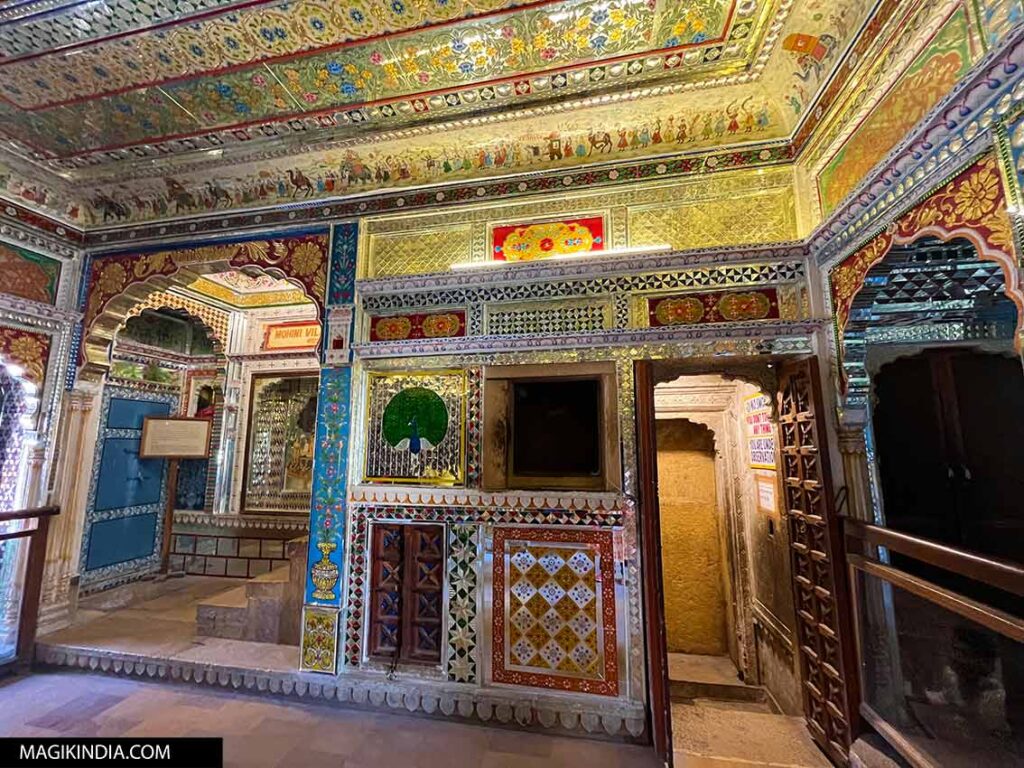
Every square inch of the facades is adorned with intricate and delicate carvings. These motifs include floral figures, geometric designs, animal representations (such as peacocks), and scenes from everyday life. The precision of the carving is astounding, giving the impression of “stone lace.”
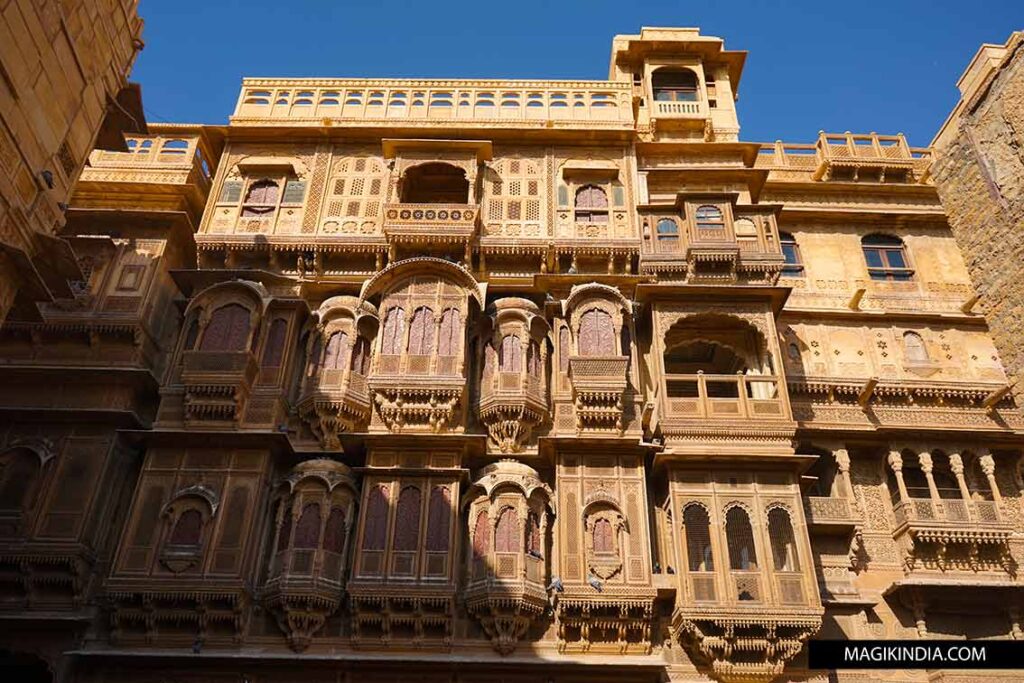
The haveli has about 60 balconies (jharokhas), all intricately carved and slightly different from each other. These balconies served not only as decorative elements but also for natural ventilation, allowing the desert breeze to circulate while providing some privacy.
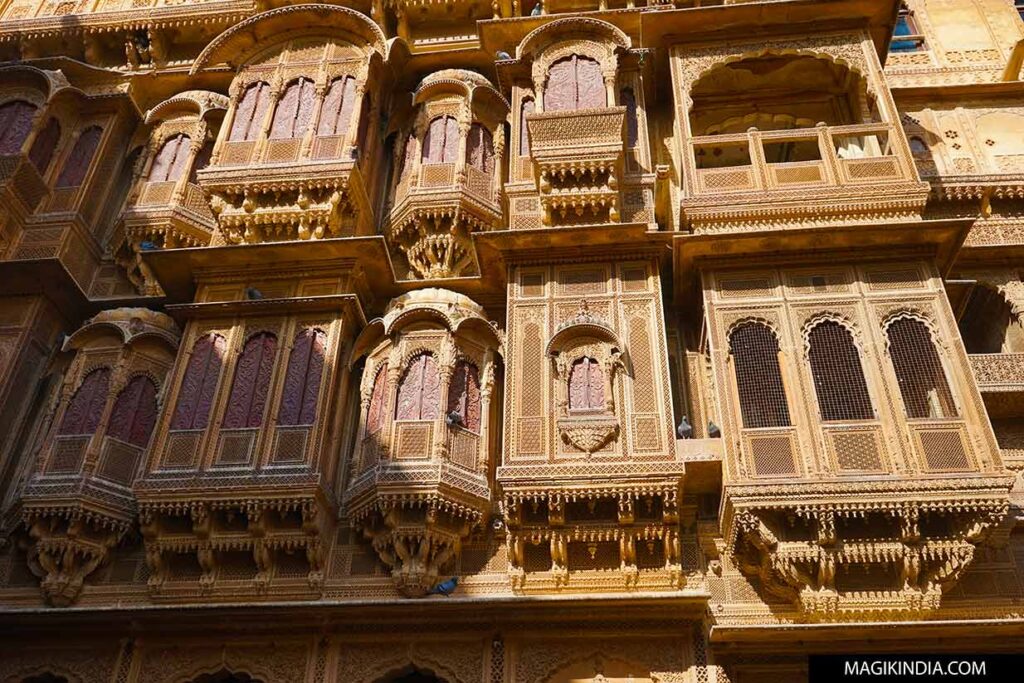
Patwon Ki Haveli is a sensory experience, a journey through time that reveals the grandeur of a bygone era and the virtuosity of Rajasthani artisans. It is a must-see for anyone visiting Jaisalmer.
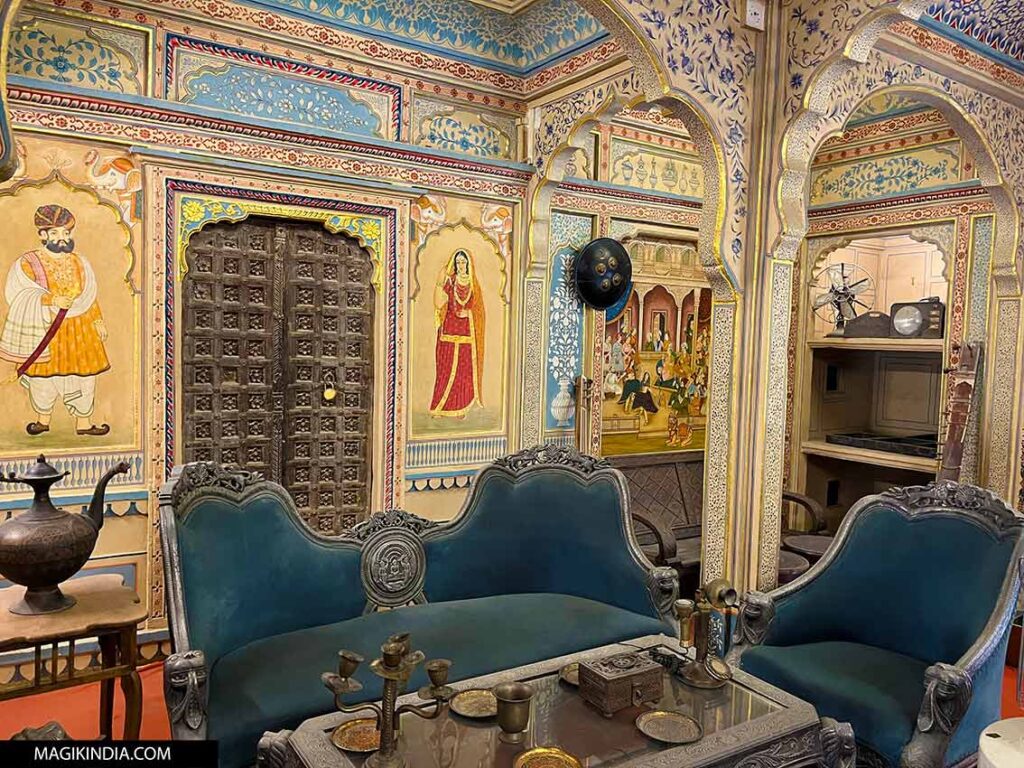
There are two other notable havelis to visit in Jaisalmer: the Nathmal Ki Haveli and the Salim Singh Ki Haveli.
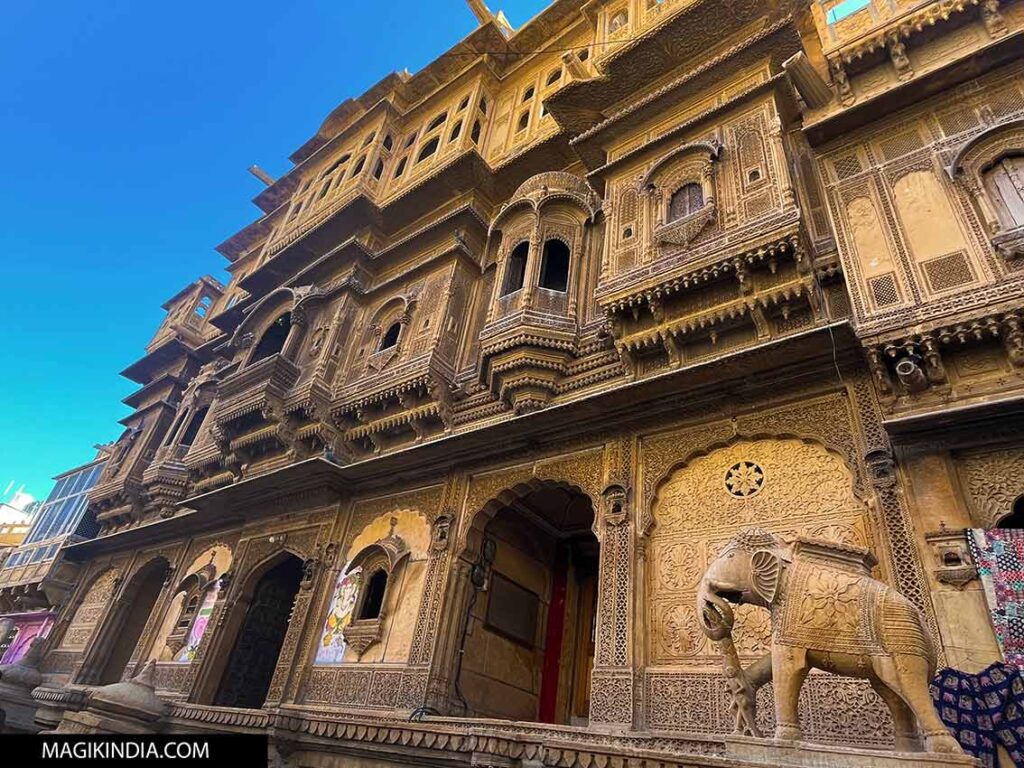
Nathmal ki Haveli was once the residence of the Prime Minister of Jaisalmer. It was built by two stonemason brothers who worked simultaneously on both sides, resulting in slight visible differences in its design.
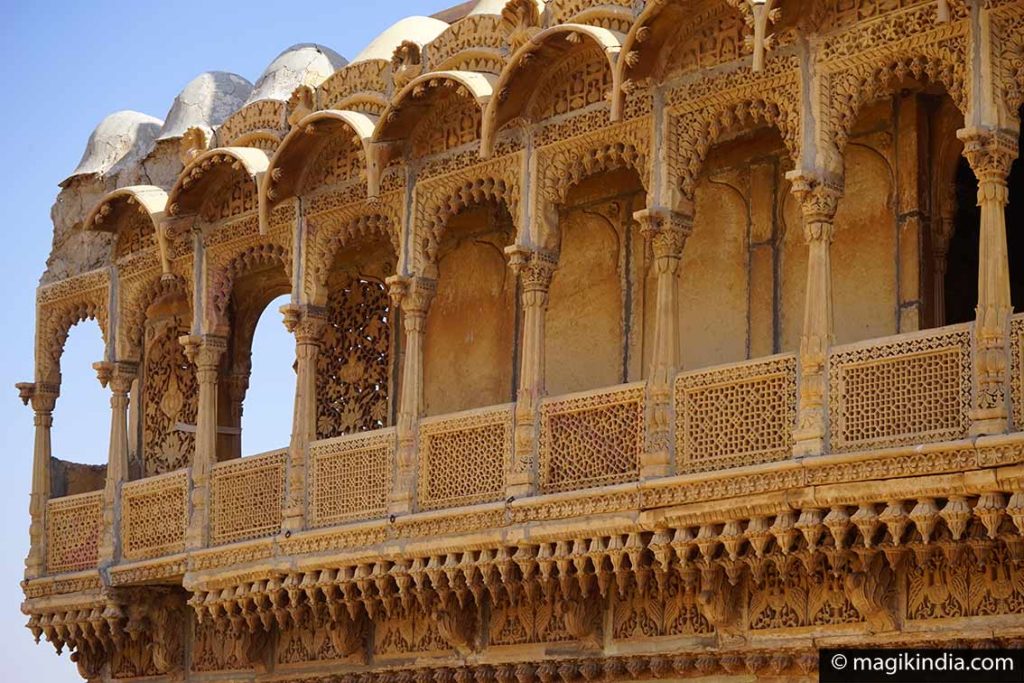
The Salim Singh ki Haveli has a facade that resembles the stern of a ship, which earned it the nickname “Jahaz Mahal” (the ship palace).
TRAVEL TO RAJASTHAN WITH MY AGENCY
